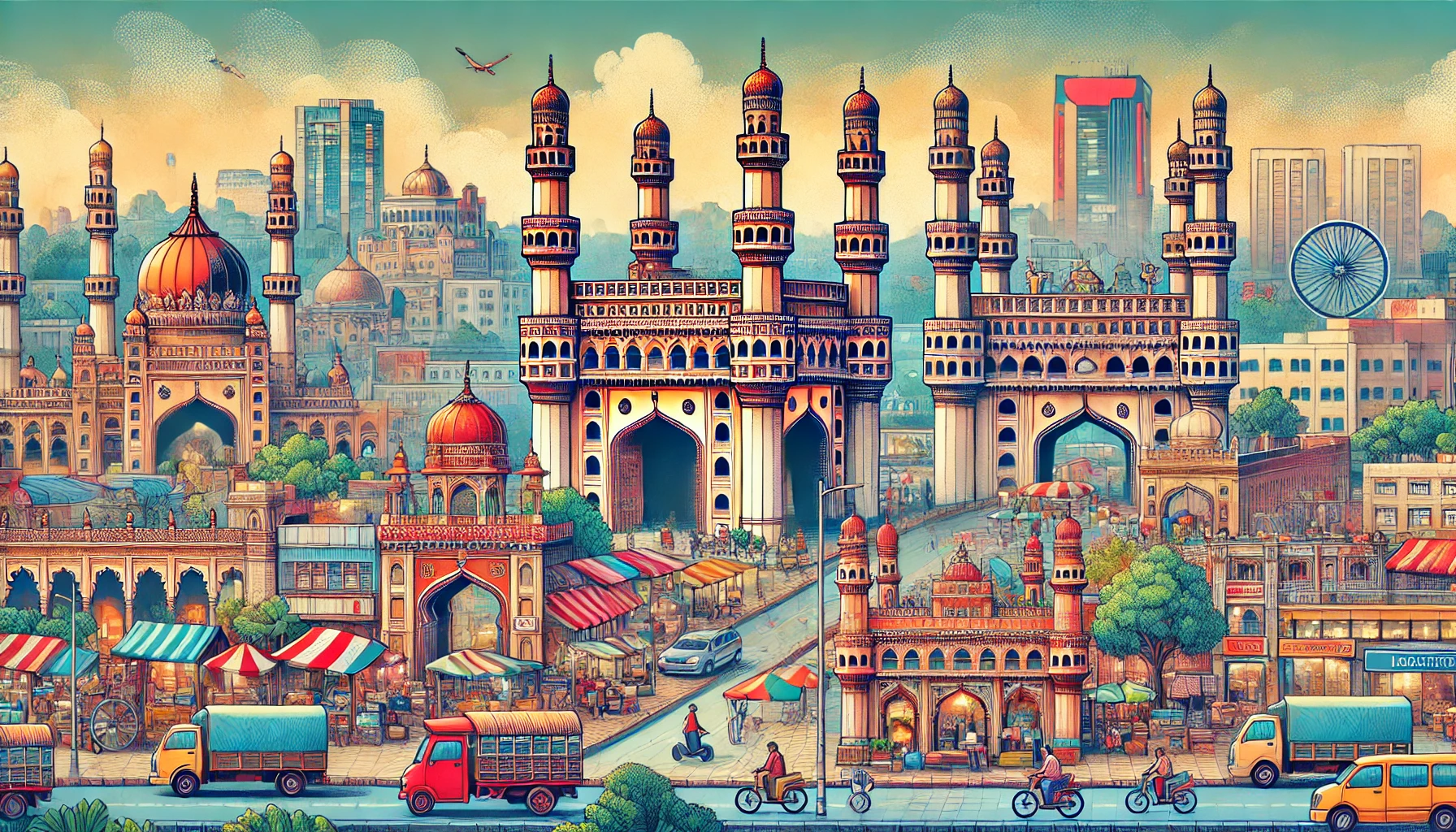Hyderabad, the "City of Pearls," has a rich and diverse history that reflects the cultural, political, and architectural heritage of South India. Situated on the banks of the Musi River, this bustling metropolis has grown from its ancient origins into a thriving modern city, blending old-world charm with cutting-edge urban development. Let’s take a journey through the fascinating story of Hyderabad.
The Early Foundations: Pre-Hyderabad Era
Before Hyderabad was founded, the region was part of the ancient Deccan Plateau, home to various dynasties, including the Satavahanas and the Kakatiyas. The Kakatiya dynasty (1083–1323) left a significant mark on the region, most notably the construction of the Golconda Fort, which would later serve as a precursor to Hyderabad's rise. Golconda was known for its diamond trade, including the famed Koh-i-Noor diamond.
The Founding of Hyderabad: The Qutb Shahi Dynasty
Hyderabad was officially founded in 1591 by Muhammad Quli Qutb Shah, the fifth ruler of the Qutb Shahi dynasty. The city was established as an extension of Golconda, which had become overcrowded by the end of the 16th century. Quli Qutb Shah envisioned Hyderabad as a grand new capital and named it after his beloved wife, Bhagmati, who later took the name Hyder Mahal.
Hyderabad was designed as a planned city, centered around the iconic Charminar, which remains its symbol today. The city was a hub of Persian culture, art, literature, and Islamic architecture, with magnificent structures like the Mecca Masjid, Chowmahalla Palace, and Tombs of the Qutb Shahi kings. It became a melting pot of Persian and Indian influences, setting the foundation for its future multicultural identity.
The Mughals and the Rise of the Nizams
In 1687, Hyderabad fell to the Mughal Empire under Emperor Aurangzeb, and the region was governed as part of the empire's Deccan province. However, the Mughal hold weakened after Aurangzeb's death, and the Asaf Jah dynasty (Nizams) emerged as Hyderabad's rulers. In 1724, Mir Qamar-ud-Din, also known as Nizam-ul-Mulk, declared his independence from the Mughals and became the first Nizam of Hyderabad. His dynasty would rule for over two centuries.
Under the Nizams, Hyderabad flourished as a princely state, known for its wealth, prosperity, and advancements in education and architecture. The Nizams were patrons of science and culture, supporting institutions like Osmania University and the Hyderabad Public School. The city became famous for its pearls, textiles, and, most notably, the grandeur of its palaces, such as Falaknuma Palace and Chowmahalla Palace.
Integration into Modern India
During India's struggle for independence, Hyderabad became a center of political tension. The last Nizam, Mir Osman Ali Khan, chose to remain independent when India gained independence in 1947, leading to a standoff with the newly formed Indian government. In 1948, after a brief military action known as "Operation Polo," Hyderabad was integrated into the Indian Union.
Post-independence, Hyderabad transitioned from a princely state to a modern Indian city. Its infrastructure expanded with the establishment of industries, educational institutions, and research centers, including the University of Hyderabad and Indian Institute of Technology (IIT) Hyderabad.
The IT Boom and the Rise of Cyberabad
The 1990s marked a new chapter for Hyderabad with the advent of the IT revolution. The state government, led by Chief Minister N. Chandrababu Naidu, spearheaded efforts to transform Hyderabad into an IT hub. This led to the development of HITEC City (Hyderabad Information Technology and Engineering Consultancy City), a technology township that became the base for many global IT giants like Microsoft, Google, and Facebook.
The growth of HITEC City and the neighboring area of Gachibowli transformed Hyderabad into "Cyberabad," a bustling tech city that attracts professionals from all over India and abroad. This growth has made Hyderabad one of India's leading cities in terms of IT exports and employment.
Cultural Heritage and Modern Identity
Despite its rapid modernization, Hyderabad has retained its cultural roots. The old city, with its bustling markets like Laad Bazaar and Begum Bazaar, continues to echo the historical charm of the Qutb Shahi and Nizam eras. Famous for its delectable cuisine, Hyderabad is synonymous with Hyderabadi biryani, Irani chai, and haleem, attracting food lovers from all over the world.
Hyderabad is also a cultural hub, hosting festivals like Bonalu, Ramzan, and Diwali, where people from different communities come together in celebration. The city's language, Dakhni Urdu, reflects this rich blend of cultures, mixing Hindi, Telugu, Marathi, and Persian influences.
Conclusion: A City with a Dynamic Future
Hyderabad’s story is one of resilience, adaptation, and growth. From its ancient roots in the Deccan to its status as a global IT hub, Hyderabad has continuously evolved while preserving its heritage. Today, it stands as a symbol of India’s ability to blend history with progress, making it one of the most vibrant cities in the country.
As Hyderabad moves forward, it embraces its role as a city of the future while staying deeply connected to its past—a true testament to its enduring spirit.
To buy RERA certified DTCP & HMDA approved Gated Community Villa Open Plots Please Contact :
For Sales : 8179712384
Mail : sales@openplots.net
